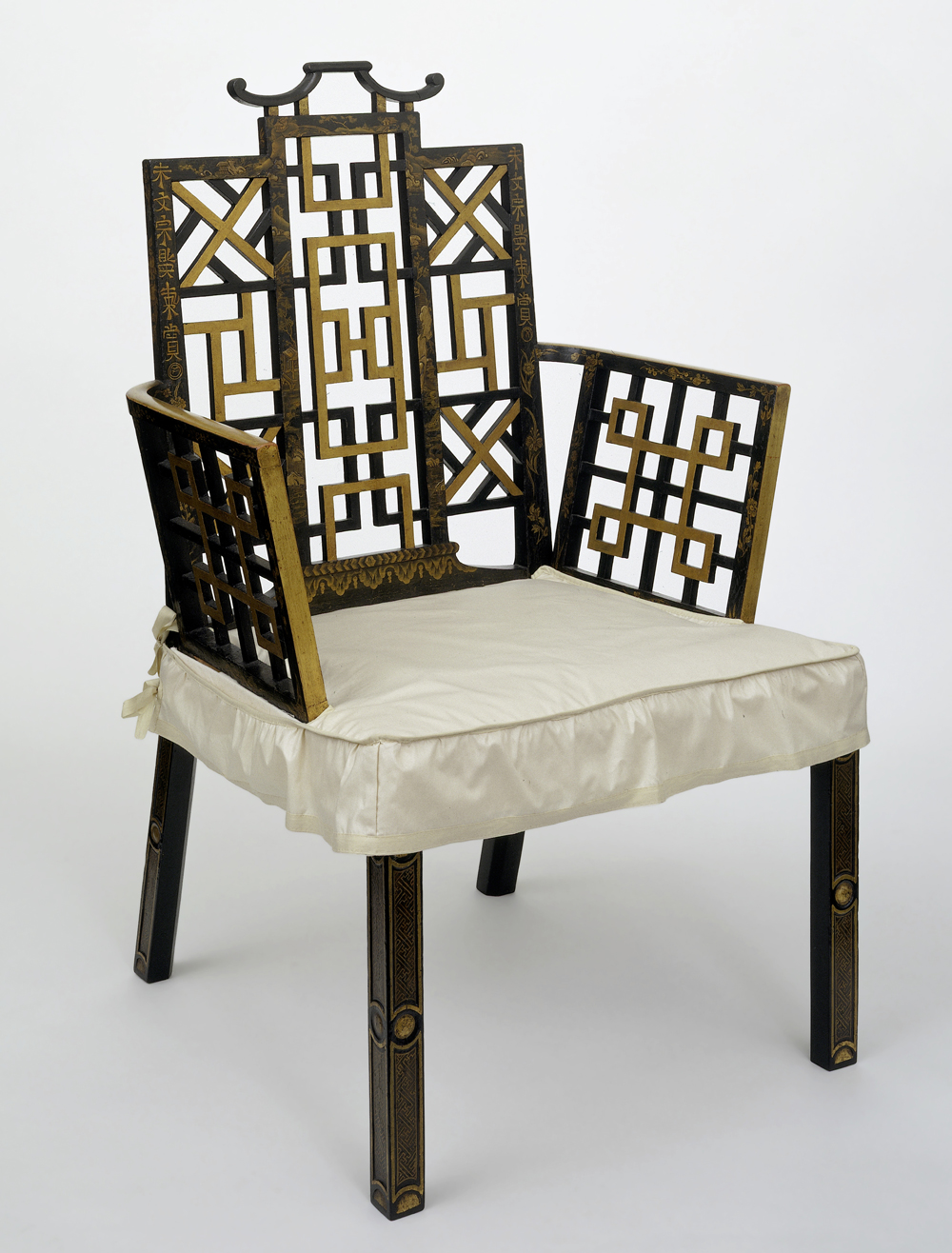Edited the wall text for that 2% of plagiarism (haha).
Chinoiserie: The Borrowed Lifestyle explores how trade with China influenced lifestyles in eighteenth century Europe, with a focus on England. The term ‘Chinoiserie’ refers to a style of Western decorative arts that borrows imagery and techniques from Chinese culture. Inspired by the work of prominent Chinoiserie enthusiast Lady Elizabeth Anson (1725–1760) at Shughborough Hall in Staffordshire, England, this exhibition showcases four different English-produced, Chinese-inspired objects from that time period. It aims to recreate the typical lifestyle of an upper-class female Chinoiserie enthusiast during Chinoiserie’s heyday.
For centuries, China fascinated the West’s imagination with its whimsical motifs of mountainous landscapes, pagodas, fabulous birds, mandarins, dragons and phoenixes. Initially, only a handful of objects found their way from the East to Europe, and these were so highly prized that they seldom entered the open market. However, the eighteenth century marked a significant change in such economic conditions, as the rise of trade with China made acquiring these objects much easier. The influx of imported goods like porcelain, lacquer ware and Chinese silk opened the floodgates to an obsession with all things Chinese in Europe, particularly in England, and with these items came the import of the ideas and techniques used to produce them.
Demand for Chinese-style goods became so high that English artisans began attempting to reproduce these products for the domestic market, inspired by the visuals that they saw on the objects, as well as the materials that they were made of. The fusion of Chinese iconography with an English sensibility became known as ‘Chinoiserie’, and remained popular from 1750 to 1765.
The influence from Chinoiserie on the English lifestyle was apparent in various ways.
From the Chinese came a new style of dressmaking, with Chinese patterns, textiles and details like colour palettes or adornments incorporated into European silhouettes. A woman’s wardrobe was always fair game when it came to society gossip and Chinoiserie gowns were marks of wealth, status and sophistication. In other words, being en vogue (“fashionable”). Chinoiserie architecture also became popular, with playful Chinese structures like pagodas and wooden bridges appearing as attractions in the stylish gardens of private and royal estates. Their exoticism was a breath of fresh air to the Georgian public, and turned natural outdoor spaces into ones of cosmopolitan imagination. Interiors were not left unfurnished in the Chinoiserie style either; homes were filled with china, lacquer ware and all sorts of other accoutrements that marked them as being heavily influenced by the Chinoiserie fad. This cultural borrowing even spawned new social norms, as from the Chinese came tea drinking, a distinctly non-English social habit that quickly became the cornerstone of polite English society. The surge in popularity of this activity even stimulated demand for domestically produced Chinoiserie tea sets that catered to English tastes while remaining aesthetically Chinese.
In short, Chinoiserie seamlessly infiltrated English homes and society’s way of life, manifesting itself in fashion, interior design, architecture, and ceramics. Though borrowed, it was not an exact imitation of the Chinese lifestyle, with the English adapting ideas and aesthetics to suit their own cultural needs while remaining steadfastly fascinated by the fantasy of China.
(520 words)

Excellent! You write extremely well! Good job!